ONE company that prides itself on building boats designed for tough Australian conditions is Bar Crusher. The Melbourne-based company knows the punishment its boats will be subjected to and has developed its designs accordingly. In fact, every Bar Crusher is engineered using the Rigideck construction method.
Rigideck is the name Bar Crusher gives to its sub-floor framing system, ensuring a stiff and solidly built craft through the use of framing that is boxed and triangulated in all directions. This solid base means you have a good platform around which to build the rest of the boat.
Also incorporated in standard Bar Crusher designs are the sharp entry and deep deadrise, which is typically between 18 and 20 degrees at the transom. You only have to look at a Bar Crusher to know what I’m talking about. With sleek lines and a sharp bow, you instantly know it will cut through the waves.
But a hull needs to do more than just slice through chop; it also needs to perform when under way and be stable at rest. To achieve this, Bar Crusher has utilised its Gen2 hull design, which has a wider reverse chine that runs further forward, better spray deflection and a higher bow attitude with the aim of delivering a drier and softer ride. The Delta Fare, a complex planing plank, has also been incorporated to provide greater lift and additional directional stability.
This basically means the boat planes easier and is more manoeuvrable in a mix of conditions. Another feature of the Bar Crusher hull is the Quickflow water ballast system. The idea behind this is that when the boat is at rest, the cavity fills with water and lowers the centre of gravity, thus making the boat more stable.
It also lowers the hull in the water, allowing the large reverse chines to work more effectively and again increase stability. The water escapes from the cavity as the boat jumps onto the plane. The beauty of this system is you don’t have to compromise.
You still have that sharp entry to give you a smooth ride, but you also have stability at rest. I recently took a Bar Crusher 575C with a 115hp four-stroke Yamaha on the back for a ride with the boys from Stones Corner Marine and Yamaha. It is always good to see an engine manufacturer turn up to a test day and run some data, as it proves to me the company is confident in its product.
Yamaha has been doing this for years and the performance data provided lets you know exactly how a boat will perform with a particular engine and prop. The beauty of this is before you buy a boat you know what it will and won’t do with a certain engine, just by having a look at the numbers.
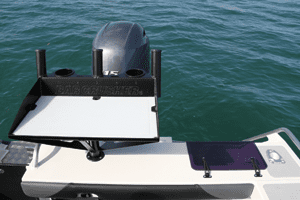
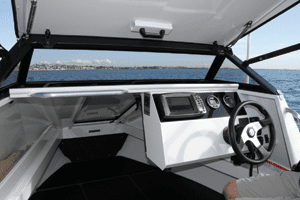
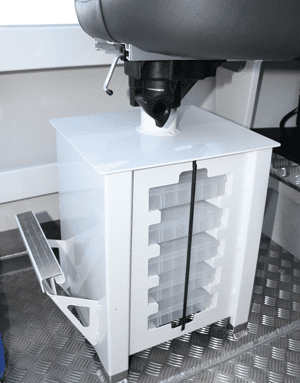
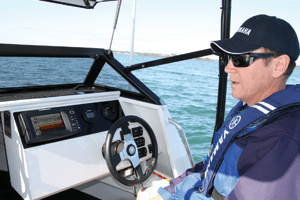
The best numbers for economy and range were achieved between 3500 and 4000rpm, which is exactly where you want them to be. Here the boat will cruise along at about 40km/h, which is a good speed for handling a wide variety of inshore and offshore conditions. As you can see from the performance table, top speed was about 65km/h, but it is interesting to note that even at this speed the boat still achieved excellent economy of over 1.6km per litre.
These are crazy numbers considering this is a substantial size boat designed to fish the offshore reefs. Speaking of size, the Bar Crusher has an overall length of 5.75m, a 2.15m beam, 4mm bottom, 3mm sides and a fully welded-in floor. The cuddy design offers a bit of protection in the cabin, maximised by bunk in-fills with storage and shelves underneath.
However, most of the boat’s space has been dedicated to the back end, which is where you want it in a fishing boat. Large side pockets have been included to give easy access to various items. I usually like to keep my offshore sinkers in small containers in these types of pockets.
The bases of the two pedestal seats hold five tackle trays each, which is a great design feature, especially if, like me, you are a big fan of using tackle trays rather than traditional tackle boxes. You can dedicate one tray to offshore hooks, one to jig heads, one to lures; the list goes on, and on the Bar Crusher you have them all within easy reach.
Combine this with several rod holders, a functional and removable bait board, live bait tank and rocket launchers for more rods and you have a rig that is ready to go fishing. However, if you want to make this a bit of a family boat as well, you can easily replace the bait board with a ski pole and enjoy a fun family day on the water.
It is also worth noting that the roof of the 575C folds down to meet the windscreen, effectively giving you a full hard top with a windscreen. I was a little sceptical as to how well you could see with the roof lowered because the windscreen isn’t that big, but I was pleasantly surprised at the amount of vision still available.
You can also add clears to the sides to provide even more protection from the elements. Overall, the Bar Crusher 575C packs a lot into a sub-6m vessel designed to handle a mix of conditions. It also represents good value, with pricing from $56,990 including the Yamaha 115hp four-stroke.
For more information on the Bar Crusher range, call the team at Stones Corner Marine on 07 3397 9766 or drop in and see the staff at the dealership for a closer look at these well-appointed and finished boats.
PERFORMANCE DATA
| RPM | Ave Km/h | AVE L/h | Econ km/L | Range km |
|---|---|---|---|---|
| 600 | 4.6 | 1.3 | 3.54 | 389.23 |
| 1000 | 6.9 | 1.8 | 3.83 | 421.67 |
| 1500 | 9.5 | 3.5 | 2.71 | 298.57 |
| 2000 | 11.4 | 5.4 | 2.11 | 232.22 |
| 2500 | 13.5 | 8 | 1.69 | 185.63 |
| 3000 | 24.2 | 10.4 | 2.33 | 255.96 |
| 3500 | 33.4 | 13.3 | 2.51 | 276.24 |
| 4000 | 41.7 | 17.1 | 2.44 | 268.25 |
| 4500 | 46.7 | 21.2 | 2.2 | 242.31 |
| 5000 | 53.8 | 26.2 | 2.05 | 225.88 |
| 5500 | 59.7 | 34 | 1.76 | 193.15 |
| 6000 | 65.8 | 40.7 | 1.62 | 177.84 |
 Bush ‘n Beach Fishing Magazine Location reports & tips for fishing, boating, camping, kayaking, 4WDing in Queensland and Northern NSW
Bush ‘n Beach Fishing Magazine Location reports & tips for fishing, boating, camping, kayaking, 4WDing in Queensland and Northern NSW

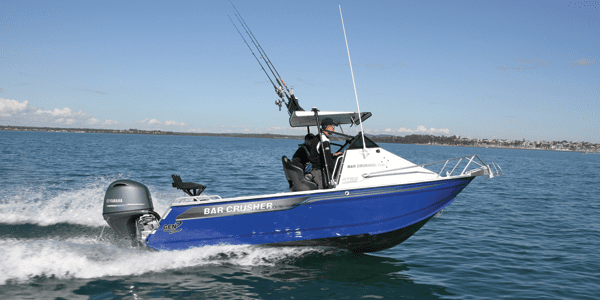




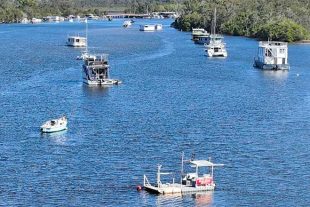
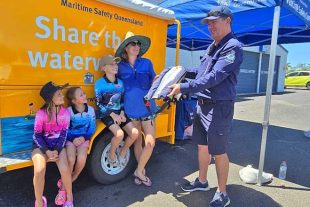
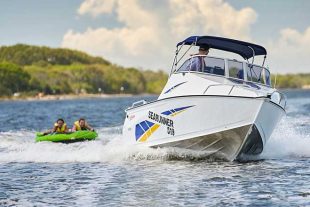

Hello have you got a performance data sheet on the 615c gen 2 hull with a 150hp Yamaha please,i have one and its got an etec 130hp on it and am thinking of upgrading it..what would be the rough change over price ,the engine has approx. 50hrs on it now and think the 150 would be a better option
Garry
Hi Gary, Thanks for your comment. I don’t have a performance data sheet for that combo – but I can check with Yamaha and see what they have. It may also be worth contacting Stones Corner Marine and checking with them. Just tell them that Ben from BNB Fishing said to give them a ring. They also sell Yamaha engines so may be able to help you out there. Their phone number is 07 3397 3766.